Style and substance: the latest tableware trends
When it comes to tableware, design and material is vital, whether you’re choosing between linen or paper tablecloths or between china or melamine crockery. Anne Bruce discovers the latest trends
A beautifully set table, Downton Abbey-style, is sure to wow customers, but in the real world, operators must choose place settings that are appropriate for their establishment.
Tableware, from tablecloths to crockery, glasses and cutlery, needs to be practical, durable and cost-effective over its lifespan. But restaurateurs should not overlook the impression that their choice of tableware will make on customers.
The message may simply be that the restaurant is a hygienic place to be as Covid-19 continues to cast its shadow. But according to research, tableware choices may also help persuade your customers to spend more, and every little helps in difficult times.
The emerging field of “gastrophysics” suggests design can affect the perceived value, enjoyment and consumption of food and drink. Research from the University of Cambridge, published this February, indicated that when restaurants served wine in 370ml rather than 300ml glasses, they sold more wine, and they tended to sell less wine when they used 250ml glasses.
A January 2019 study into the impact of tablecloths on consumers’ food perception found that fabric table linen contributed to a significantly higher preference of the meal quality in general. Better service, ambiance and overall experience at the restaurant were attributed to a setting when fabric table linen was used.
And back in 2015, a team from Oxford University’s Crossmodal Research Laboratory ran an experiment with more than 130 diners looking at the weight of cutlery. This found that diners liked their main course more, thought it more artistically plated, and were willing to pay 15% more for it when eating with heavier cutlery. Studies have also shown that diners feel fuller when they dine from a smaller plate, and larger plates can make diners think they still have room for dessert.
Tablecloths
Table linen has an unquestionable influence on the perception of a dining offer, says Kate Gough, general manager at Mitre Linen. How tables are dressed has a significant impact on the visual appeal of a room, whether satin, cotton or easy-clean polyester is selected.
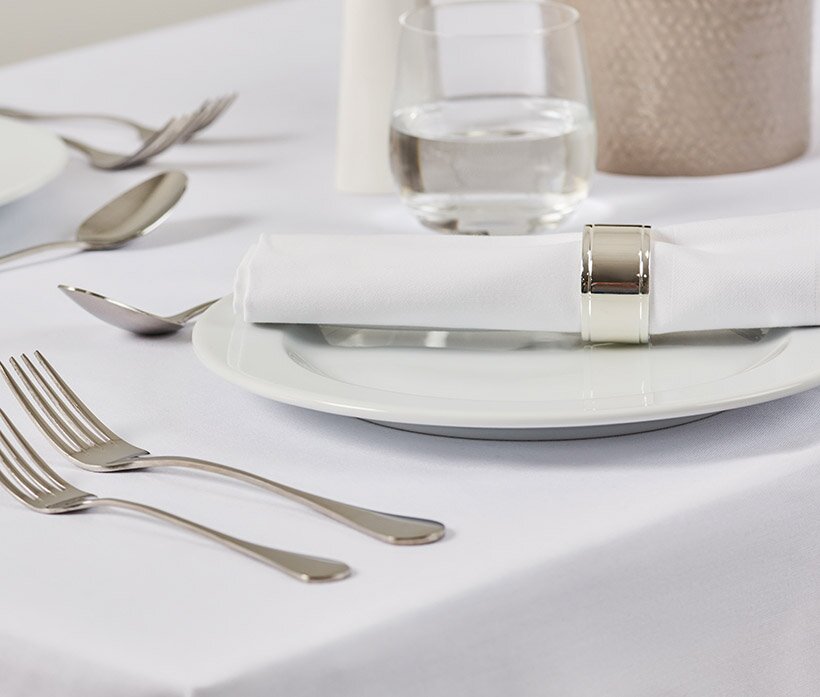
Specialist chemical manufacturer Christeyns argues that tablecloths can also be something of a silver bullet as the hospitality industry gets back on track after the lockdown.
With health and safety of staff and customers top of the agenda, “Nothing says clean more than pristine, white table linen,” comments operations director Justin Kerslake.
Reusable able tablecloths could be used on a wider scale in restaurants, to prevent cross-contamination from table-tops and surfaces, he suggests: “If they are not cleaned correctly, table surfaces can harbour germs. A fresh set of hygienically laundered linen can provide peace of mind as well as preventing contamination.”
Reusable linen is more sustainable than disposable paper placemats and napkins, Kerslake argues. On top of that, the setting of tables with linen can act as a marker to diners and to staff as to which tables are available. With social distancing measures, it could indicate seating availability without any off-putting signage.
Crockery
Whether you are running a high-end restaurant, hotel or foodservice company, choosing the right crockery can be daunting. Denton Tableware sales director George Hefferman says: “While your budget is likely to be your primary concern, you’ll also have to consider a wide range of factors, such as how much storage space you have and whether or not you need it to be safe for use in the freezer, dishwasher or microwave.”
It is also worth measuring ovens, fridges, freezers, microwaves and cupboards to make sure products will fit, he suggests. He also suggests that when buying plates, add 50% onto the capacity of your restaurants, as some crockery is always going to be in the kitchen, either being washed or ready to be plated up.
There are many types of china to consider, from porcelain in hard or soft paste, to hardwearing vitreous china to Run of Kiln (seconds) and the terms are used loosely. Make sure the specification you choose is fit for purpose.
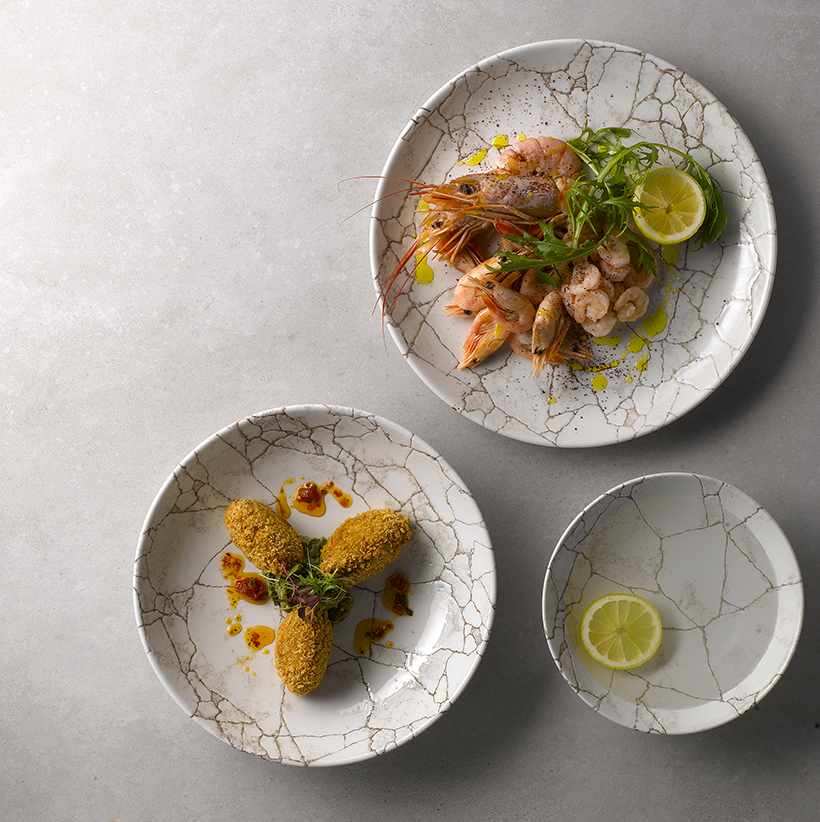
Another option is melamine tableware, which avoids costly breakages, suggests Steve Morris, sales director at Jestic Foodservice Solutions. The durability and value of melamine tableware, which is shatterproof, stain-resistant and dishwasher-safe up to 100°C, makes it a popular choice with public sector caterers, he says, with quick-serve restaurants and casual dining operators also investing in it.
“Good-quality, modern melamine tableware can have the look and feel of china without the replacement cost and is also available in a huge variety of other styles, shapes, colours and textures,” says Morris.
Kathryn Oldershaw, marketing director at Utopia Tableware, highlights the importance of durability. Having dishwasher-safe options is especially important as businesses adapt to meet the increased hygiene demands in response to Covid-19, she says.
Because of the pandemic and the widespread stepping up of hygiene and safety measures, diners themselves are more conscious of restaurants’ hygiene processes, adds Signature FSE’s managing director Paula Sherlock. Operators might be advised to opt for dishes that allow individual portions; for example, French brand Chasseur offers mini cast-iron dishes with lids. Cast-iron also has great heat retention, meaning the food will stay warm longer than standard chinaware, she says.
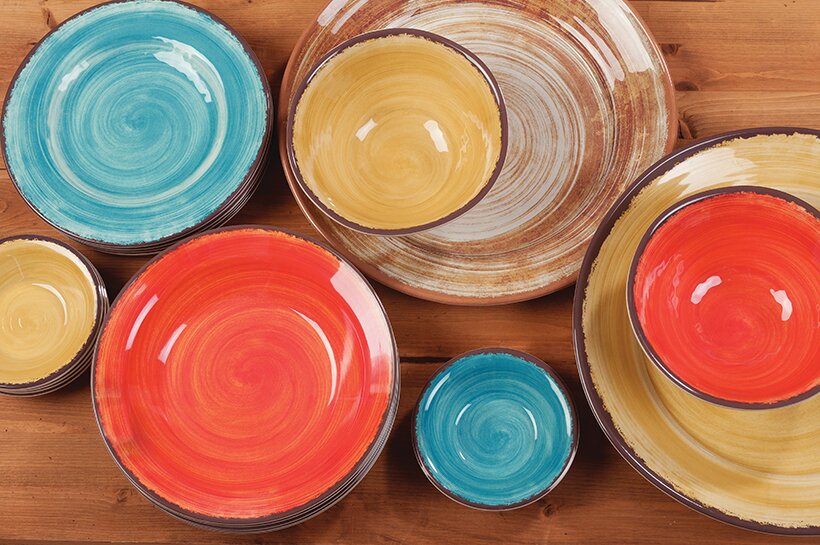
Cutlery
One of the most important pieces of kit that every operator needs is cutlery, which is used at every point of service. Elia International sales manager Adam Walker advises that durability should be the number one concern when choosing the silverware.
Elia would always recommend 18/10 stainless steel cutlery for its durability, he says. The 18/10 formula includes the highest amount of nickel producing the greatest resistance to rust, and longest-held polish. Sophistication and elegance embodied in clean lines and simplicity is the current style trend, he adds.
Glassware too should be decided on with one eye on style and the other on functionality. Elia has identified a trend for ultra-fine stemmed glasses, fuelled by a growing appreciation of fine wines. This has resulted in many establishments presenting comprehensive wine menus with a sommelier service. Elia recently launched a fine crystal collection in response to this trend, mouth-blown by skilled craftsmen and hand-finished.
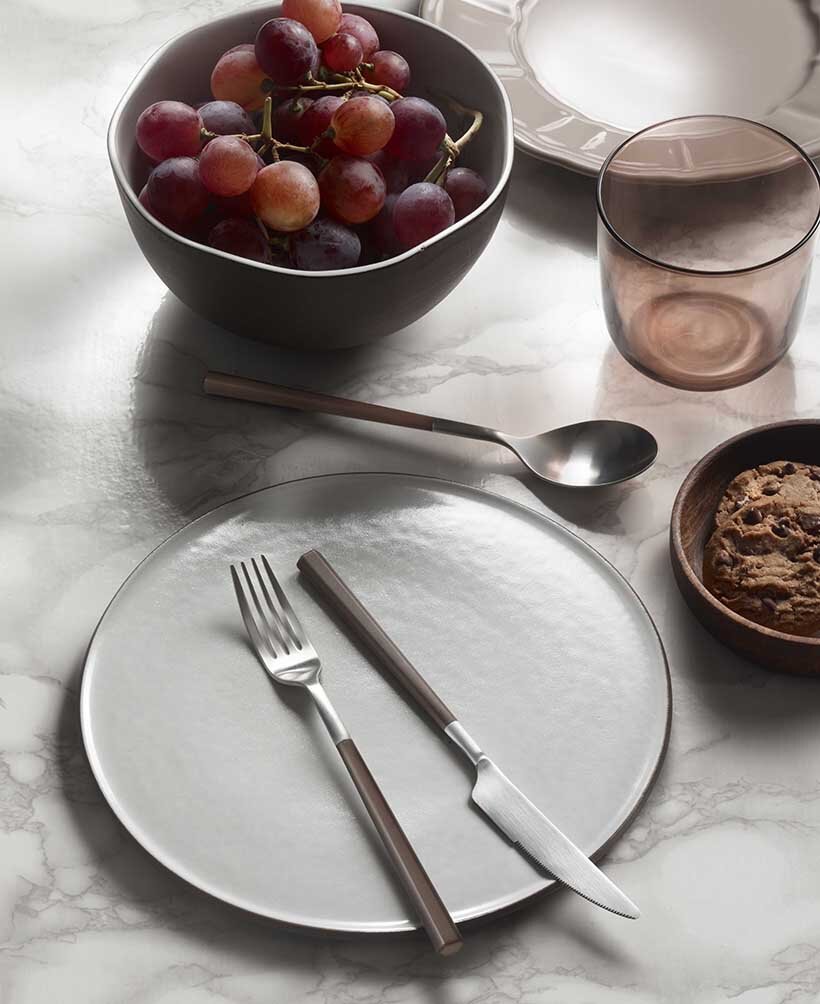
Design trends
Turning to overall aesthetics and design trends, Burkhard Schmidt, sales director of hospitality at Villeroy & Boch, says that tableware should contribute to the storytelling of the restaurant, and, in high-end dining particularly, serve as a stage for food.
“Customers should always see the line in the design of a restaurant – from the building and setting to the food to the tableware. For example, regional and organic dishes are perfectly highlighted by natural-looking tableware.” This can be seen in the Villeroy & Boch Rock collection, inspired by shale, which is dishwasher-safe and suitable for microwaves, he says.
Dudson’s handcrafted collection Harvest also draws on a ‘farm-to-table’ philosophy. Each piece is glazed by hand, leaving an original ‘makers mark’ on the reverse. And Churchill China’s latest launch, Kintsugi, is a modern interpretation of the Japanese art of repairing broken pottery.
Oldershaw at Utopia Tableware notes that the supplier can help operators theme their establishments to tie-in with trends. Targeting the ever-growing vegetarian and vegan sectors is Utopia’s Back to Nature theme, which highlights rustic tones such as greens and light browns, in a more unfinished style.
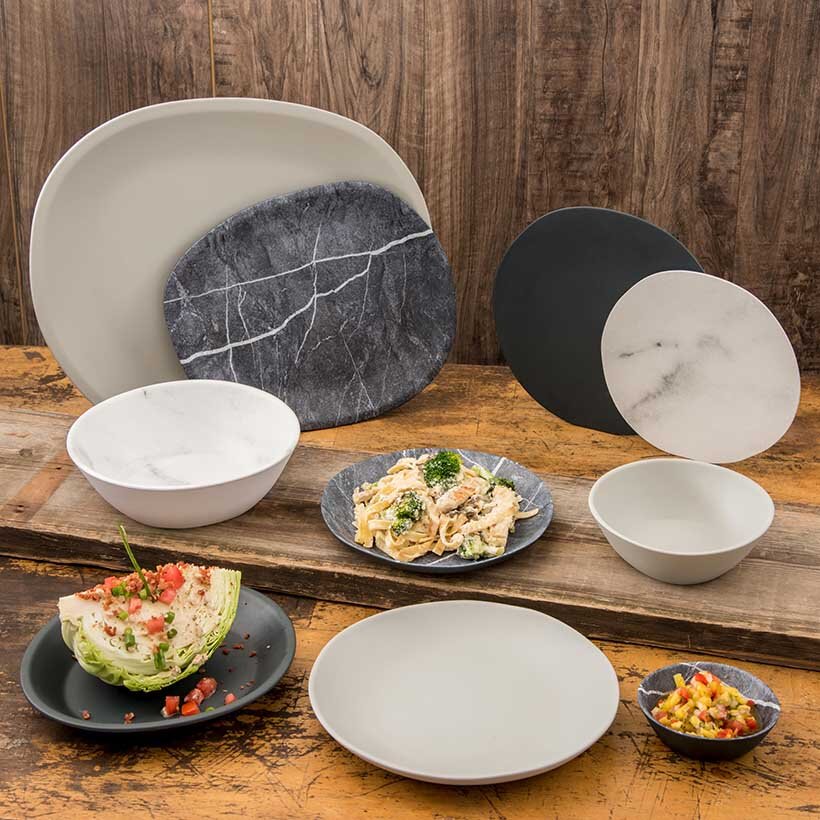
Metallics are also hot this year in tableware, Oldershaw reports. Metal exemplifies strength and power and makes a dramatic statement on any table, bringing out the vibrancy of dishes and catching the light to add further atmosphere.
There are plenty of options for operators looking for tableware, but it’s vital that products match a restaurant’s style and doesn’t overshadow the food being presented. Therein lies the dilemma facing operators when weighing up tableware choices. How much style do you need to provide a point of difference and complement your food and drink? And how much practicality is needed to ensure that your business runs smoothly, with hygiene a top priority?
The only definite answer seems to be that choosing 370ml wine glasses will help you sell more wine.
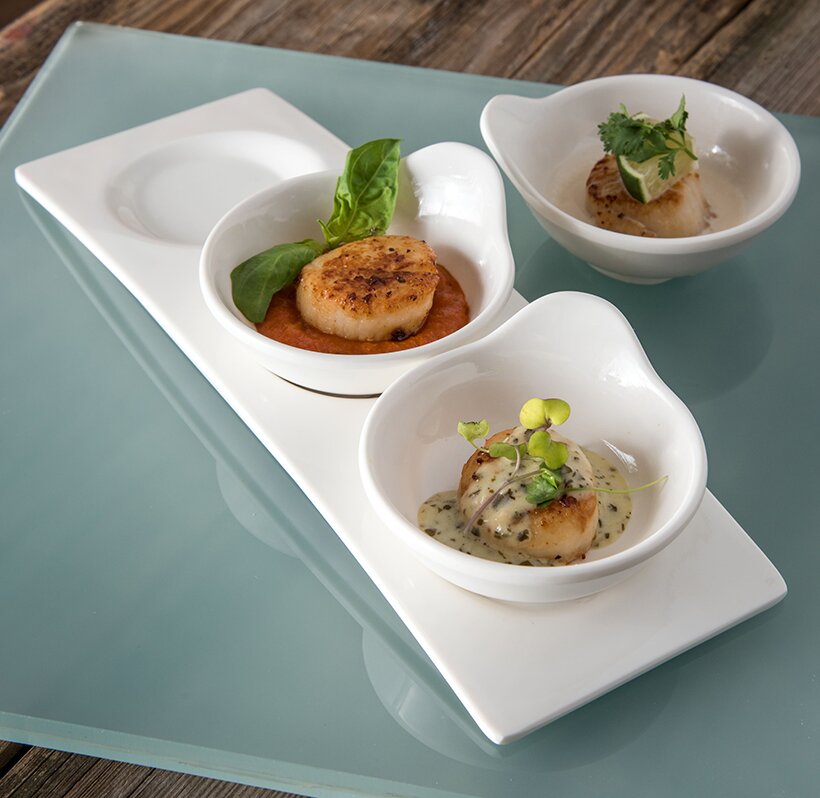
Jill Stein on tableware
“Tableware, like everything, is about personal style. I like simple, white porcelain and we have always used this in the Seafood Restaurant – trends may come and go, but we have never changed our view on the this. “Crockery is a vehicle for food and not the other way around. A simple white plate with a rim functions brilliantly. Boards, slates, buckets and trolleys are my pet hate! Square plates, triangular plates, kidney-shaped plates, to me, are far too fussy and will lose their appeal in time, but the white classic plate will live on forever.”
Jill Stein, co-founder of the Rick Stein Restaurant group and designer
Suppliers
Christeyns www.christeyns.com
Churchill www.churchill1795.com
Denton Tableware www.dentontableware.co.uk
Dudson www.dudson.com
Elia www.elia.co.uk
Jestic Foodservice Solutions www.jestic.co.uk
Mitre www.mitrelinen.co.uk
Signature www.signature-fse.com
Utopia www.utopia-tableware.com
Villeroy & Boch www.villeroy-boch.com



















